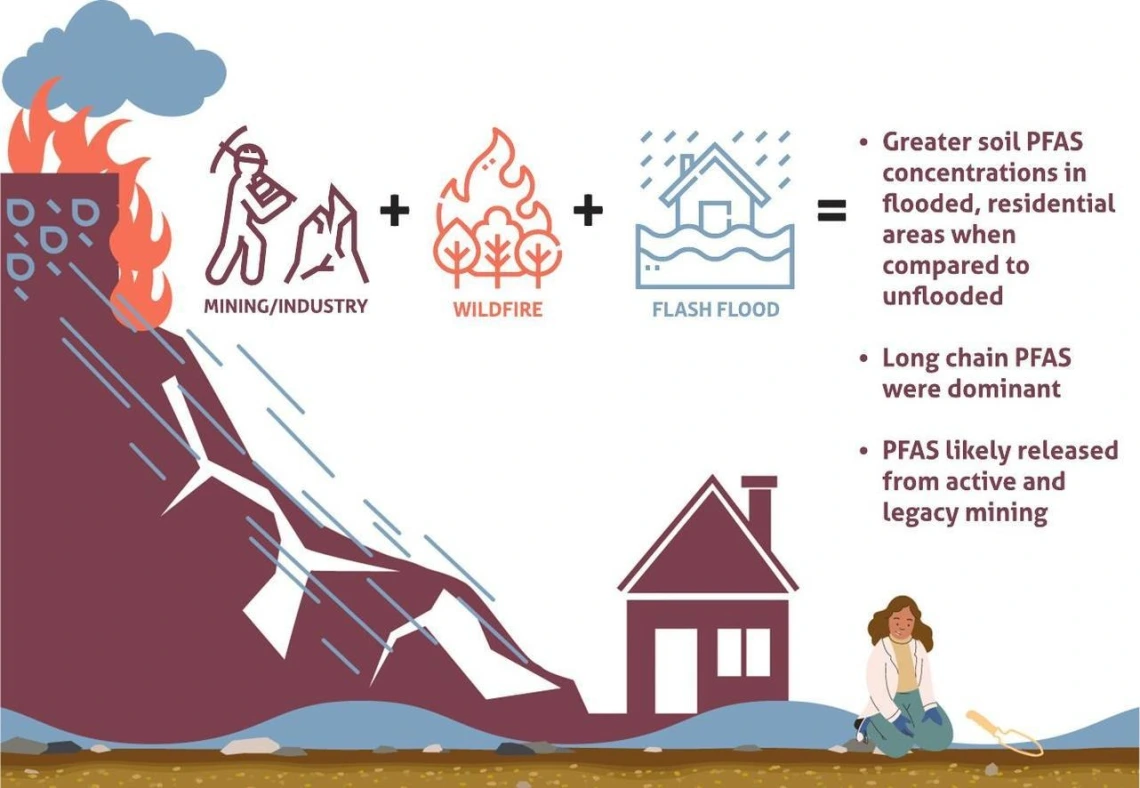Toxic Layering and Compound Extremes: Per- and polyfluoroalkyl Substances (PFAS) Exposure in Rural, Environmental Justice Copper Mining Communities

Gift Chukwuonye, a member of the Integrated Environmental Science & Health Risk Laboratory directed by Dr. Ramirez-Andreotta, just published “Toxic layering and compound extremes: Per- and polyfluoroalkyl substances (PFAS) exposure in rural, environmental justice copper mining communities”.
Per- and polyfluoroalkyl substances (PFAS) represent a group of environmental pollutants with far-reaching impacts on public health and ecosystems. Although the sources of PFAS have been largely established, the contributions from mining have only recently started to be investigated. While previous studies have acknowledged the use of PFAS in mining activities, there remains a gap in quantifying PFAS levels in residential communities surrounding mines.
The goal of this current study was to characterize PFAS contamination in a mining community affected by wildfires and postfire flooding and debris flow into residential areas. The study aimed to address this issue with three primary objectives:
- Characterize soil PFAS concentrations in a community affected by both active and legacy copper mining
- Examine the (re)mobilization of PFAS following fire and flood events
- Explore the co-occurrence of PFAS and metal(loid)s from mining activities
The results of the study reveal that there was no significant difference in the concentrations of the majority of the PFAS compounds at the residential and control sites, indicating that the anthropogenic background levels of PFAS in the community were potentially attributable to mining, release from domestic products, and atmospheric deposition. Additionally, the significantly greater concentrations of long-chain PFAS in the residential sites impacted by postfire floods highlights the role of flooding in the mobilization and redistribution of phased-out long-chain PFAS.
The study shows that in general, PFAS concentrations were greater in flooded areas, suggesting that these extreme climate events can drastically alter contaminant patterns, leading to increased exposure to environmental hazards. For environmental justice, fence-line communities exposed to multiple contaminant sources, this research highlights potentially increased vulnerability with worsening climate change. Therefore, climate incidents have the potential to redistribute contaminants further from source zones into noncontaminated areas.
In summary, this research substantially contributes to our understanding of PFAS distributions in environments impacted by mining activities and extreme weather events.
These findings emphasize the urgency of increased attention to the spread of contaminants exacerbated by floods and other climate events. As climate change intensifies, leading to more frequent and severe fires and floods, it is crucial to deepen our knowledge of PFAS behavior across various environmental settings to inform regulatory and remediation measures.
PUBLICATION: Chukwuonye GN, Alqattan ZA, Jones M, Jones C, Brusseau ML, Ramírez-Andreotta MD. Toxic layering and compound extremes: Per- and polyfluoroalkyl substances (PFAS) exposure in rural, environmental justice copper mining communities. Sci Total Environ. 2024 Dec 20;957:177767. doi: 10.1016/j.scitotenv.2024.177767. Epub 2024 Dec 3. PMID: 39631327; PMCID: PMC11661929.

